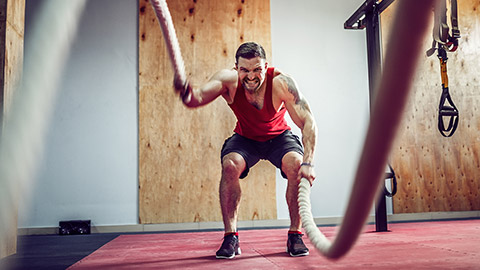It is a requirement of New Zealand businesses and people in trades to meet the responsibilities under The Consumer Guarantee Act (1993) (CGA). The act sets minimum guarantees for all products and services and, also allows the consumer to seek repairs, replacements, or refunds when goods are faulty.
The purpose of the CGA is to protect consumers who purchase goods or services. It serves as a safeguard to ensure that consumers receive fair treatment and are not taken advantage of by businesses or service providers.
The Consumer Guarantee Act serves to:
- outline what consumers can expect when they purchase a product or service from a business.
- provide guidelines as to what the business must provide to its consumers.
- give the consumer the right to seek a solution from the manufacturer if the products or services do not meet one of the guarantees, regardless if the products come with a manufacturer's warranty, or not (also known as an “express guarantee” in the Act).
Services
As the types of services businesses can offer consumers are quite wide-ranging and can include (but not limited to) services such as hairdressing, photography, early childhood, and fitness providers. The CGA protects consumers by stating services must be as follows:
- Carried out with reasonable skill and care: done properly to a reasonable standard
- Fit for a particular purpose: results in what the consumer told the service provider the service was needed for
- Carried out in a reasonable time: the service was completed in a reasonable time, if the timeframe was not agreed upon beforehand
- Charged at a reasonable price: the service was charged at a reasonable amount if the cost was not agreed upon beforehand. (Consumer Protection, n.d.)
Products
Product guarantees are applicable to both new and second-hand goods distributed by business inside New Zealand. Product guarantee covers a range of personal property, including software, animals, and fitness equipment. The CGA states that products must:
- Match their description: the product received matches the product description or the same model
- Is of an acceptable quality: the product is in good working order and free from defects
- Fit for a particular purpose: it does what the retailer was told it was needed to do
- Arrive in good time and in good condition: the product is delivered in good condition and at the agreed time. (Consumer Protection, n.d.)
What does this mean for you, the exercise professional?

As an exercise professional, you have a responsibility to provide a variety of services to your consumers while upholding the reputation of your business, your employer, and your own professional reputation. To do this, it's essential to be familiar with the guarantees outlined in the Consumer Guarantees Act and to ensure that you adhere to them. By doing so, you can create an ethical and positive environment for your colleagues and clients. Therefore, it's crucial to provide high-quality services to new and existing clients in compliance with the Act.
Read the following case study.
Case study: Expectations vs Reality
Kim signs up for a one-week trial at a gym and decides to take advantage of the one on one personal training session. Before her first session, the exercise professional ensures to give Kim a full explanation on expectations of her first session (what to wear, what to bring and to call if she needs any further information).
On the day of the session, Kim is appropriately dressed and has brought all the necessary documentation which have been pre-populated and ready to go. When waiting at the reception area, she notices that they have charged her an additional amount which was not confirmed prior when making the booking- at this stage Kim is not too concerned, so she still goes ahead with her session.
When she meets her exercise professional, she is appropriately introduced and then sits through a little brief of the expected session plan, and safety aspects. When the session commences, the exercise professional asks Kim to stretch, demonstrating the movements she wants Kim to achieve, but does not comment on the movements she is doing wrong- this part goes for 1-2 minutes in total.
After warm-up is complete, the exercise professional takes Kim to the weights area and asks for Kim to hold a weight she is not completely comfortable with. The exercise professional laughs and says, “it’s not that heavy, you’ll be fine”. As Kim raises the weights, she loses balance, stumbles over, and rolls her ankle.
The Privacy Act (2020) controls how organisations:
The Office of the Privacy Commissioner creates and fosters a culture where personal information is secure and respected. They provide direction and advice surrounding the Privacy Act, its principles and other relevant privacy codes. There is specific data which defines what is considered to be personal information, some examples of this data include names, phone numbers, email addresses and other observations where an individual is identified.
Visit their website to read further into their 13 Principles which are applicable to personal information you obtain from your clients.
The importance of the Privacy Act
The Privacy Act is applicable to almost every person, business or organisation in New Zealand. An agency could face severe consequences for breach of information. Some examples of ways companies could breach this act include (but are not limited to):
- Not having a clear understanding of the data collected
- Collecting information from a third party without proper authority
- Sharing private information with a third party without proper consent
- Collecting information unlawfully, unfairly, or intrusively
- Inaccurate/outdated information on file after correction has been filed.
What does this mean for you, the exercise professional?
When working in roles which involve a various amount of clientele, you will be expected to collect a range of personal information of each individual which include names, contacts, health information etc. These sensitive types of data will need to be appropriately stored to ensure you are meeting your lawful requirements. The times you will be required to collect this information will usually be on commencement of your contract with a client but will most likely be needing to be accessed at various times as necessary. As you work with your client(s), this will guide you to meet and better understand their personal needs.
Have a read of the following scenario to see a great example of how a fitness trainer can professionally adhere to the privacy act whilst at work.
Case Study: Breach of privacy

Maggie is a personal trainer who works at a large gym in the city. She's been in the industry for several years and has built a reputation as a knowledgeable and effective coach who cares about her clients' wellbeing. She takes pride in her professionalism and ethics, and always tries to maintain boundaries between her personal and professional life.
One day, Maggie is working with a client named Ari, who's been training with her for several months. Ari is a friendly and outgoing person who enjoys socialising with other gym-goers. As they're finishing their session, Ari asks Maggie for the phone number of another client, Jane, who he met in the gym and wants to invite to a social event. Maggie hesitates for a moment, knowing that sharing personal information about a client without their consent is a breach of privacy and could damage her reputation as a trainer.
Maggie explains to Ari that she cannot give him Jane's phone number, as it would violate her privacy and trust. She reminds him that she's responsible for safeguarding the personal information of her clients, as per her professional code of ethics and legal obligations under data protection laws. She also points out that it's not appropriate to ask for someone's contact information without their consent, even if they met in a public place like the gym.
Ari seems disappointed and a bit surprised by Maggie's response, as he didn't think it was a big deal to ask for a phone number. He apologises for putting Maggie in an awkward position and thanks her for her professionalism. Maggie reassures him that she understands his intentions were well-meaning, but that she must uphold the privacy and confidentiality of her clients at all times. She suggests that he could try to approach Jane directly in the gym and ask for her contact information, or find other ways to connect with her that respect her privacy and boundaries.
After the session, Maggie reflects on the incident and feels proud of herself for standing up for her values and principles. She knows that being a personal trainer requires more than just physical training and coaching, but also involves building trust, respect, and ethical conduct with clients. She feels confident that she made the right decision, and that her clients will appreciate her for it in the long run.
This is a fantastic outcome, however, have you had a think of what could have gone wrong had Maggie given out Jane's number?

Duty of care is the responsibility of all to ensure that each person’s actions or lack of actions do not cause harm to themselves or others. New Zealand's workplace health and safety law is known as The Health and Safety at Work Act (2015) (HSWA). This Act is in place to safeguard everyone in the workplace by minimising the rate of injury and deaths which may occur in the case of negligence or in accidental situations within the New Zealand workforce.
Consultation within the workplace is extremely important, especially when it comes to health and safety matters. HSWA advocates for all businesses to have worker engagement and participation around health and safety matters, irrespective of level of risk or the type of work carried out.
Engagement: it is fundamental for success that business’s must ensure workers’ opinions on matters that could affect their health and safety are discussed and considered.
Participation: it is important to have transparent, effective, and constant ways for employees to bring up concerns or suggest improvements on a on a continuous basis. (WorkSafe, 2019.) The act ensures everyone’s responsibilities are transparent, such as:
- Businesses are accountable for ensuring the overall health and safety of their employees and of anyone which may be considered at risk from the work of their business.
- Officers (including company directors, partners, board members, chief executives) must exercise care to ensure the business understands and is meeting the required health and safety obligations.
- Workers have a duty of care to ensure the health and safety of themselves and others. They are also required to adhere to and comply with health and safety related company policies and procedures and follow all safety instructions provided to them.
- Other individuals, such as visitors or customers, also need to comply with all health and safety obligations in order to ensure their actions do not negatively impact others. (WorkSafe, 2019.)
What does this mean for you, the exercise professional?
As an exercise professional, you have the overall responsibility to ensure the care and safety of yourself, your clients, colleagues, and any other person/s who may be affected by your work. This means is that you have a duty of care to everyone while at your workplace. There are a lot of legalities involved in health and safety so it is vital that you are completely aware of what you can and cannot do.
Risk assessment
As a personal trainer, it's important to perform a risk assessment at the gym to identify any potential hazards or risks that could lead to injury or harm to your clients.
Here are the steps you should take to perform a thorough risk assessment:
| Step 1 | Identify the Hazards | Walk through the gym and identify any potential hazards. These could include equipment that is not in good condition, poor lighting, uneven flooring, or cluttered spaces. |
| Step 2 | Determine the Likelihood of Occurrence | Once you've identified the hazards, you need to determine the likelihood of these hazards occurring. For example, if you notice that a piece of equipment is not in good condition, you need to determine how likely it is that someone could be injured while using it. |
| Step 3 | Determine the Severity of the Hazard | Once you've identified the hazards and determined the likelihood of occurrence, you need to determine the severity of the hazard. For example, if a client were to trip over a piece of equipment that is not in good condition, how severe would their injuries be? |
| Step 4 | Assess the Risk | After you've identified the hazards and determined the likelihood and severity of occurrence, you need to assess the overall risk. This involves determining the likelihood of the hazard occurring and the severity of the potential injuries. |
| Step 5 | Determine Control Measures | Once you've assessed the risk, you need to determine control measures to prevent or minimise the risk. For example, if you've identified a hazard with a piece of equipment, you could remove it from the gym until it's repaired or replaced. |
| Step 6 | Record and Review | It's important to record your risk assessment findings and review them regularly to ensure that the gym remains a safe environment for your clients. |
In addition to these steps, you should also ensure that you and your clients are following proper gym safety protocols, such as using equipment properly, warming up before exercise, and using spotters when lifting heavy weights. By performing a thorough risk assessment and taking appropriate control measures, you can help ensure the safety of your clients while they exercise at the gym.
Accidents and emergencies

Accidents and emergencies can occur in any workplace, including in fitness facilities. As a personal trainer, it is important to be prepared and know how to manage these situations. Your responsibilities in the event of an accident or emergency include:
- Ensuring the safety of all individuals involved
- Administering first aid, if necessary
- Calling for medical assistance, if necessary
- Reporting the incident to your employer or supervisor (if appropriate)
- Completing an incident report
Examples of accidents or emergencies that could occur in a personal training facility include:
- A client falling off a piece of equipment and injuring themselves
- A client having a heart attack or other medical emergency during a workout
- A fire or other environmental hazard in the facility
- An assault or other violent incident
In the event of an emergency, you should immediately notify the appropriate individuals, such as your supervisor or emergency services. This could involve dialing 111 in New Zealand to contact emergency services. It is also important to have a clear evacuation plan and ensure that all individuals in the facility are aware of it.
To manage accidents and emergencies, it is important to have proper training in first aid and emergency response. You should also ensure that the facility has appropriate safety measures in place, such as first aid kits and fire extinguishers.
Overall, being prepared and knowing how to respond in the event of an accident or emergency is crucial in ensuring the safety of all individuals in a personal training facility.
Just to show that incidents can happen to the best of us. Have a read of the following incident that occurred to the renowned business of Les Mills at the Auckland gym in 2015 where a worker was severely injured.
The following link contains information of the court summaries. Note, this is public information provided within the WorkSafe website:
WorkSafe: Court summaries. Les Mills Auckland Limited
Before diving into client safety, read the following article for best practice guidelines.
Reading
Read the ACC best practice guidelinesClient safety
Client safety is our number one priority as personal trainers. Often people come to us because they want to know how to perform movements safely and reduce risk of injury. There are great resources like the one provided above that can help us stay safe, but also understanding what to do in case of an accident or injury is important.
Some of the main takeaways from the above guidelines document include:
- Ensuring to complete a detailed pre-screening with new clients to identify risk factors, medical/physical conditions, use this information to support safe practice, and record testing results with notes on form.
- Ensure you take your clients through appropriate warm ups and cool downs.
- Adhere to exercise prescription principles.
- Correcting exercise form and technique – everyone performs movements differently, but understanding how your client normally moves will help you keep an eye out for abnormalities
- Checking the environment for safety risks and hazards.
- Ensuring to work within your scope of practice.
- Responding appropriately to injury and recording near misses and injuries – a big part of this is documenting correctly with WorkSafe and having an up to date first aid certification
In summary, if you are a PCBU, you are responsible for the welfare and safety of your clients and should do all that you can to ensure their safety and enjoyment.
